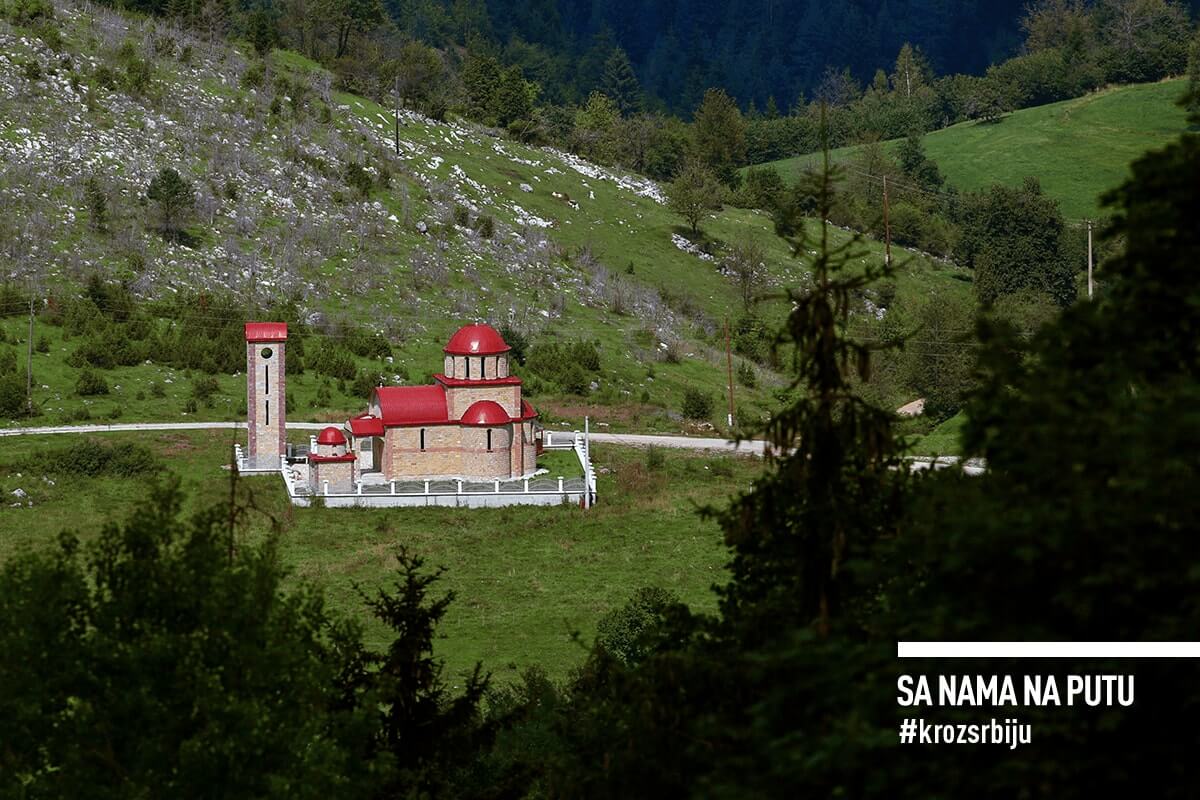Summer slowly travels and moves to the southern hemisphere, so we decided to hike a little bit more before the Sun starts to tease us only in cool dawns and evenings. Driving along the Ibar main road has never been either especially interesting or relaxed. To make time go by faster, our thoughts are going faster than our wheels, already making plans for new occurrences and events, and soon we glimpsed the slopes of another mountain beauty of South-western Serbia.
11 reasons to visit Zlatar and Mileševa monastery
Why visit Mileseva and Zlatar?
1. Because the engine will refresh on Gazprom Zlatibor petrol station
The mountainous landscapes are very challenging for men, but also for any vehicle. They always require extra mile, additional pressure on the gas pedal. We stop at Gazprom Zlatibor PS to refuel our four-wheel vehicle with G-Drive diesel, to treat it with additional force and better acceleration. It will pay us back many times more on steep mountainous slopes. This premium fuel successfully fights even the engine corrosion. One thing less to worry about. And it will serve you longer. For gasoline driven engines G-Drive 100 has been nothing short of effective. It guarantees more comfortable and safer drive.
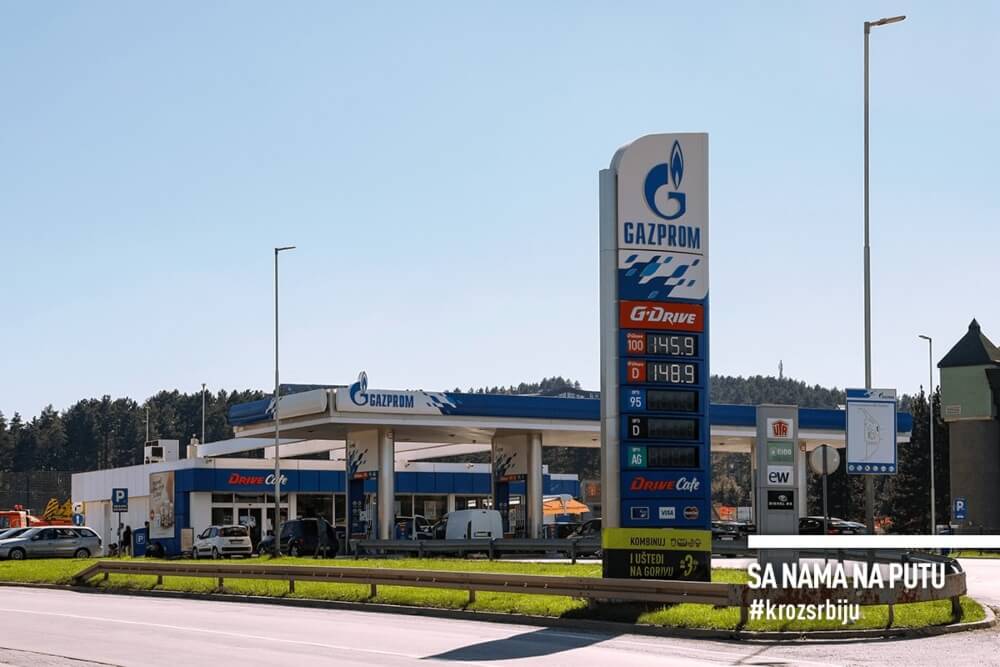
2. Because Zlatar is worth its weight in gold indeed
There is no confirmation whether gold had been extracted here in ancient times or not. But every inch is worth a gold coin, certainly. Fragrant meadows, lavish pastures, crystal-clear waters, dense coniferous forests, marvellous vista points. The air is beneficial due to mountainous and mediterranean climate.
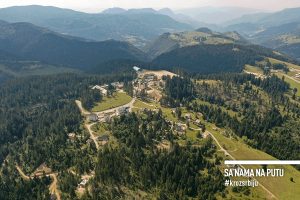
Hikers-explorers may stretch their step and roam along 30 kilometres long arranged walking paths, which lead to hidden corners – Vilovo, Komaran and Vodena Poljana. One must make a stop at the monastery of Saint Cosmas and Damian. This log church was built of timber, by the best local builders, in Raška architectural style. Further on, one may proceed to the highest peak of the Zlatar mountain, “Golo Brdo” (bare hill). A bit more privileged are the bicyclists to whom 100 kilometres of forest challenges awaits ahead. If you are of adventurous spirit, then head to adrenalin park on the “Babić Brdo” (Babić hill). Stretching, small exercises, endurance and skill tests, or merely a friendly rivalry. “Goldsmithing” may be done forever. Whoever comes once, does not want to leave.
3. Because the Zlatar nights are starry and mornings are miraculous
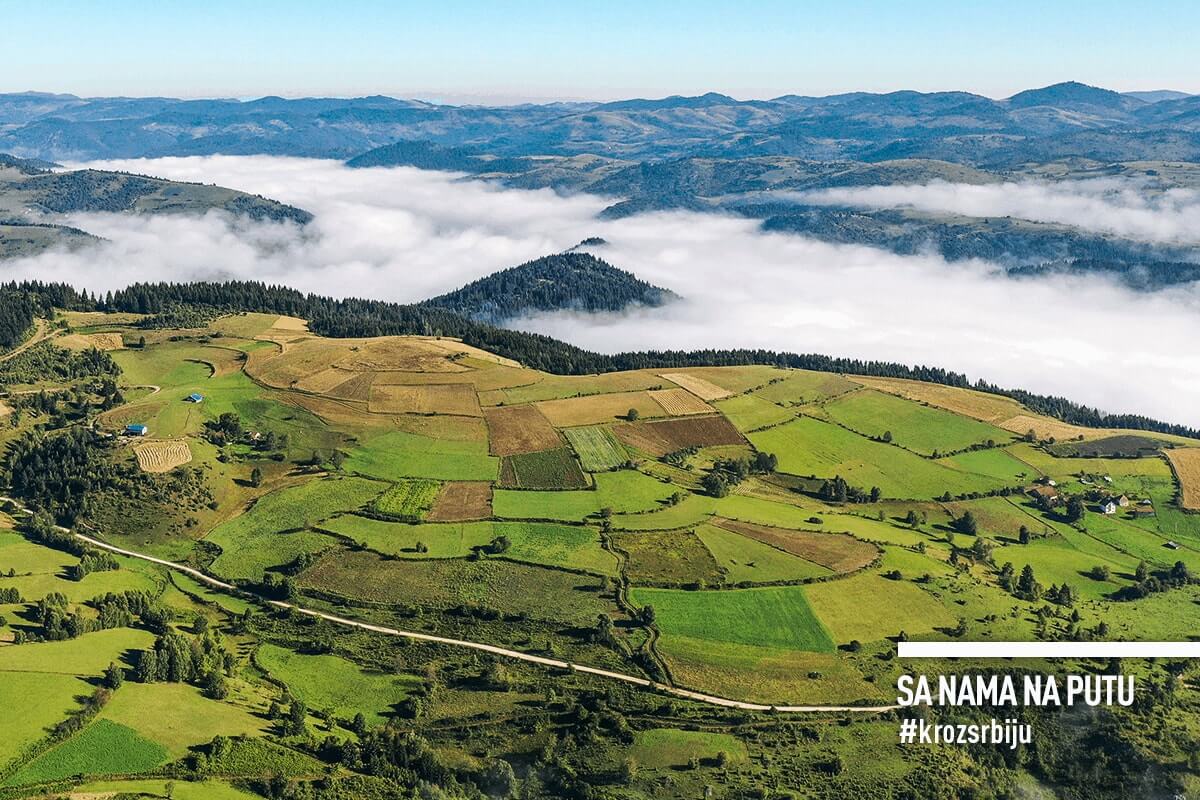
We arrived late, tired and famished. Our hosts watch over and wait at already set dining table. They have brought only what was found in the house – cheese, kajmak and homemade bread. It was a feast even for the well fed. Magical sky wished us welcome as well. Luminously dark, in the robe of flaming stars. All the brightest ones, all of them are Morning Stars. They seem so close, within arm’s reach. They seductively taunt us to touch them, steal them. Thinking of at least one star on our palm, we fell into a deep, calm sleep.
Morning, equally fairytalish. Bare footed, we walk on dewy, velvety grass. Coffee and tea already prepared, await us on the garden furniture made of logs. “They are a bit late”, aunt Ljubinka says a bit concerned. “They forecast what the weather will be. They do not fly in bad weather”. There, in the yard, above Zlatar Lake, rises a cliff upon which, in mornings, before spreading their wings, the “eagles”, as the locals call them in endearment, usually gather. “They slept over”, sturdy uncle Mića adds shabbily, spotting with his experienced eye one of the birds in the distance. Soon they covered the sky with their gigantic wings. Unusual company for the morning coffee. It would have been nice if they had landed to hang out with us a bit.
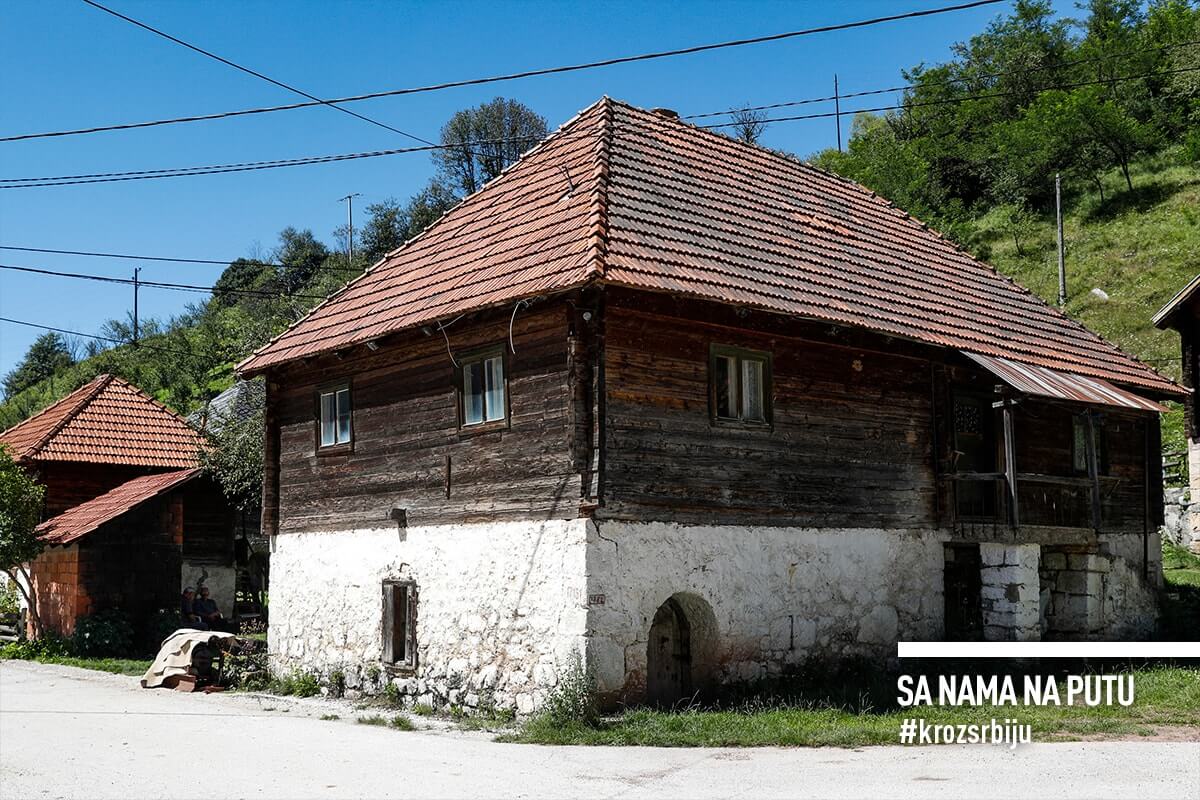
At the dawn, aunt Ljubinka made and baked buns filled with Zlatar “set” and packed them carefully. “This is to keep hunger away, my children” she said caringly when she saw as off. All the mothers and fathers of Serbia, all their calvarias and kindness fitted in those buns. And also the heart of one Zlatar-born woman, more golden like her homeland.
4. Because Štitkovo is a museum in which people live
It is tucked in a narrow valley, between the hills; we do not exactly know in which century it was formed. According to traditions, it was named after the shields that had been forged there. Nobility lived and resided there, namely, the Rašković dukes. Today Štitkovo has about twenty mountainous houses of old-Vlach type, with loopholes, with no fences, and with floral front yards facing the church. The oldest one is from the year 1882. They are old, but almost all are in good condition. Living, inhabited museum.

“Today, there are eight inhabitants here, and once there were hundreds of us”, says one of the remaining villagers, kindly, but anxiously. Deep is the sadness that the youth had left the village. He does not count his years. “My children, I am 89”, he proudly reveals. Those years have left deep trace on the highlander’s forehead. He had seen all sorts of things, overcame many difficulties and had seen many armies out. “All of them asked for food, except Germans…who would know what they had eaten”.
According to tradition, the church in the centre was built on the ruins of the previous one by the end of 19 century, and on its entrance is the fountain of cold potable water. Near the church is a newly built, small school, however, empty, since there are no pupils. Štitkovo has not celebrated the arrival of a new-born child for a long time. A coffee shop in ethnic style gives some special vitality to this small village. Homemade raspberry juice, is a must here.
5. Because Mileševa monastery is the lighthouse of Serbian culture
There are many sacred places and objects among Serbs, but one of them, not far from the city of Prijepolje, stands out as a place of pilgrimage, where Saint Sava used to dwell during his life, and which was once named after him – the Monastery of Saint Sava. People of all kinds and jubilant little children are all around. Chantingly, undauntedly, closely and vividly. A sight and a feeling of some parallel world. Almost perfect one.
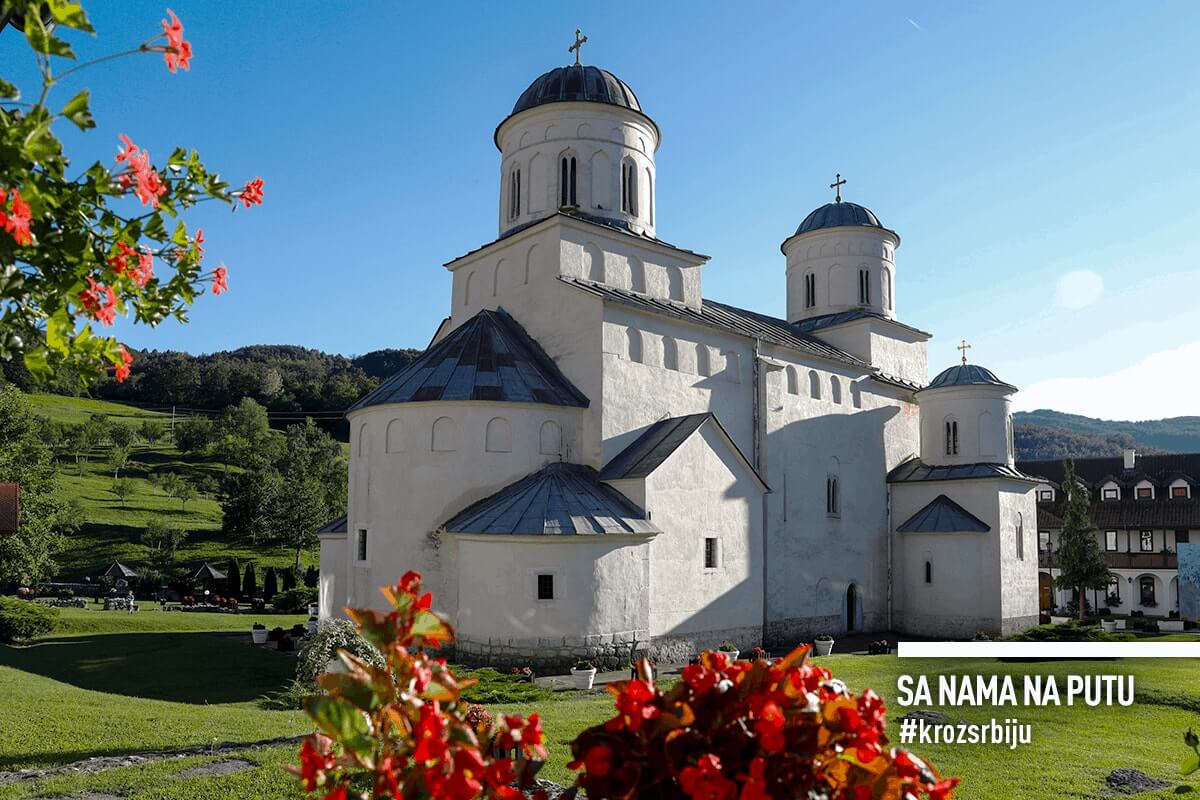
Mileševa monastery is surrounded by white walls – by lodgings and the Treasury. In the corner is the largest bell in Serbia, a gift of Russian people from Ekaterinburg. Rather high cross is placed on the nearby hill, with the help of mountaineers and police chopper unit. To show the way from afar to all benevolent people.
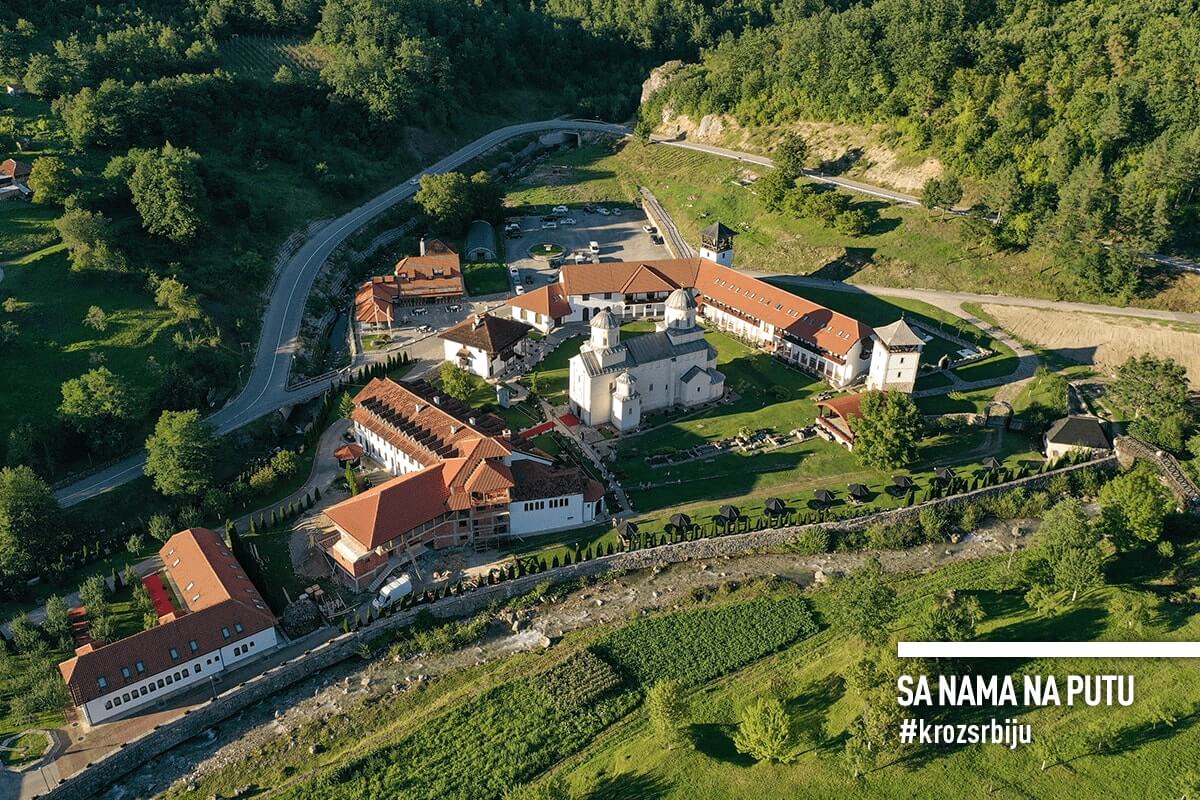
It is the endowment of King Vladislav, the grandson of Stefan Nemanja, who built it in 1219 as his burial church. It gained high reputation among the people by the transfer and arrival of Saint Sava’s body from Trnovo, Bulgaria in 1236. More than three and a half centuries, Mileševa had protected the relics of the most renowned Serbian saint, until Turks took them in 1594 and moved to Belgrade to burn them in public. It still treasures the left arm of the first Serbian archbishop within its walls. Its present appearance originates from the renovation done in the 19 century. It is the monastery which preserves most angels painted on its walls. But one of them, the most specific angel, stirs up admiration.
6. Because the White angel is century-long omen of peace and hope
Its beauty is out-of-time. The art – outstanding. Message – voiceless and wordless. With eight centuries woven in it. The witness of destruction and robbery, herald of resurrection. White angel. Of Mileševa monastery. It represents Archangel Gabriel, clad in white chiton, who is sitting on an empty grave, because the Lord had resurrected. The divine beauty is in the act of resurrection itself, the most joyous event after the birth of Jesus Christ, as a nun from Mileševa monastery states, trying to make us figure out the magnificence of this fresco painted by an unknown author in early 13th century.
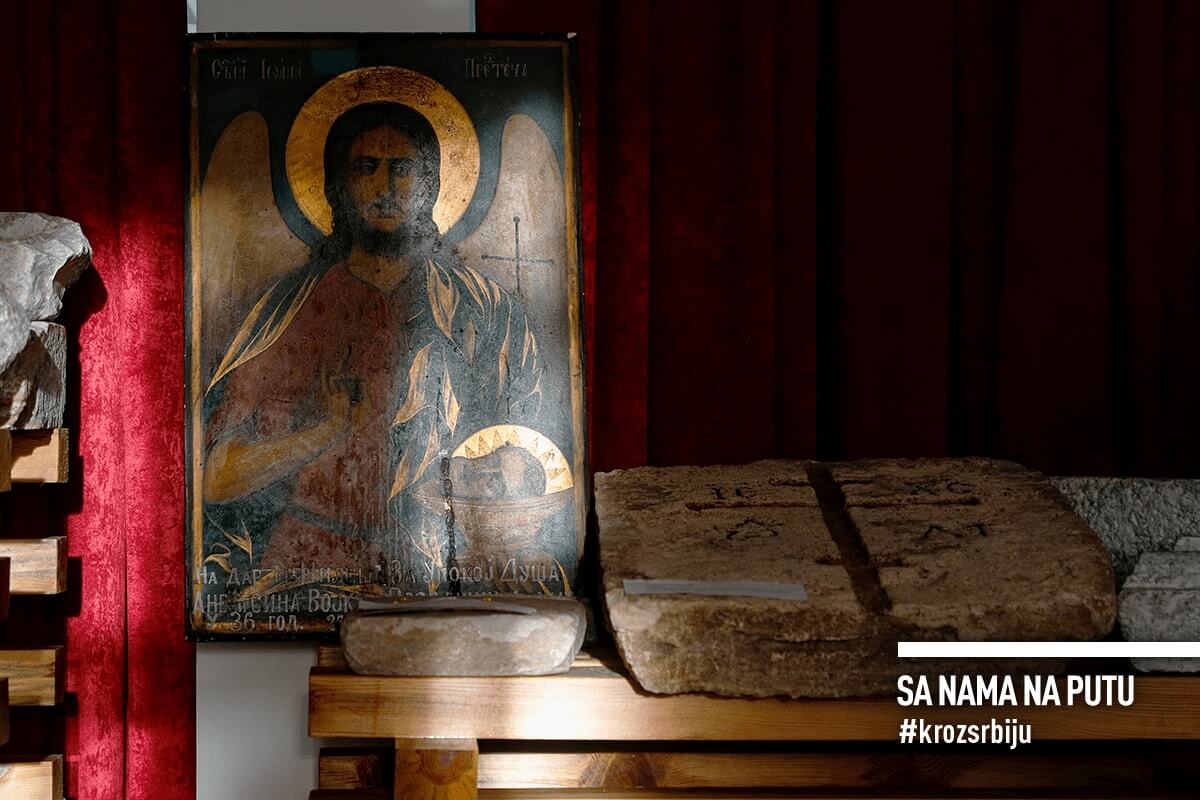
Always on the path of mighty armies and on the sward’s slash of the dishonorable, Mileševa has preserved its most precious angel. Hundred-year long, huge distress had triggered inexhaustible ingenuity and wits in people. Under the invasion of Turks, White Angel was covered with the layer of stucco; another, not especially valuable fresco was painted over it, and managed to trick the merciless. It has waited covered like this until 1863, to illuminate and ennoble the world. It is said that Mona Lisa follows the admirers by her eyes. White Angel enlightens the souls. Prayer, healing, confession, inspiration… the feeling is merely personal. Many people consider it the most beautiful achievement of the Middle Age art, and they see Serbia as the land under the wing of White Angel. Keeper of inheritance. The memorial of who we are and a warning what we must not become.
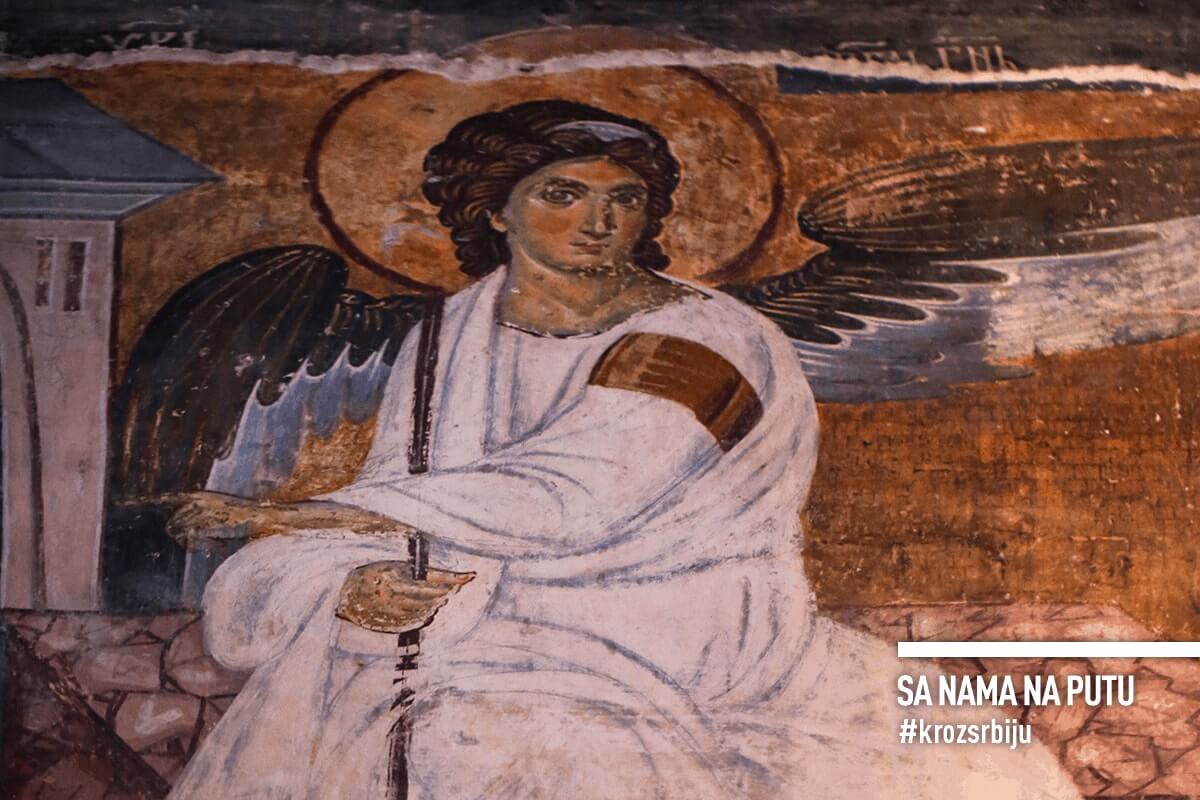
7. Because Saint Sava’s cane testifies of autochephality
A walk through history, the halls of century-old literacy, creativity and spirituality. The sceptre of Saint Sava, gifted by the patriarch Manuel in Nicaea, in 1219, when Serbian Orthodox Church gained its autonomy. Cetinje octoechos, printed in the city of Obod in 1493. The Treasury has inherited and kept numerous sacral and artistic antiquities, icons, manuscripts, charters, handicrafts, archaeological excavations and coins. Many treasures have been destroyed and stolen, many of them still dispersed all over the world.
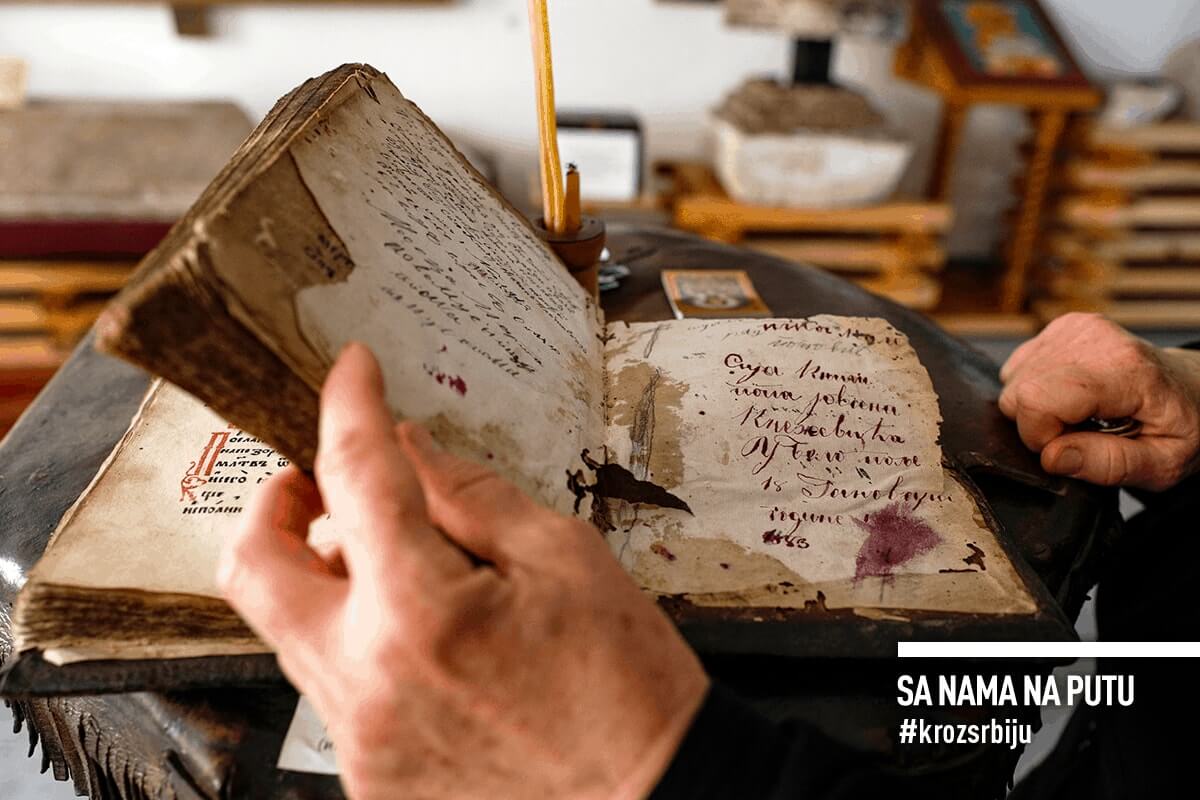
It was built on the foundation of an old, robbed and demolished Mileševa treasury, as well as the new library that reminds us of the printing shop that had worked only less than one century after Gutenberg’s one.
8. Because the Mileševka canyon hides the hermitage of Saint Sava
Not far from the monastery, on a steep rock above the bubbling Mileševka river, there are remnants of the city of Mileševac. It, supposedly, was built at the same time as the eponymous monastery, to serve as a fortress for the protection of the endowment of Nemanjic dynasty. During Osman rule, it was called Hisardžik, after the Turkish word “hisar” (fort). The name was kept by the village bellow the fortress, which also has a four-century old mosque.
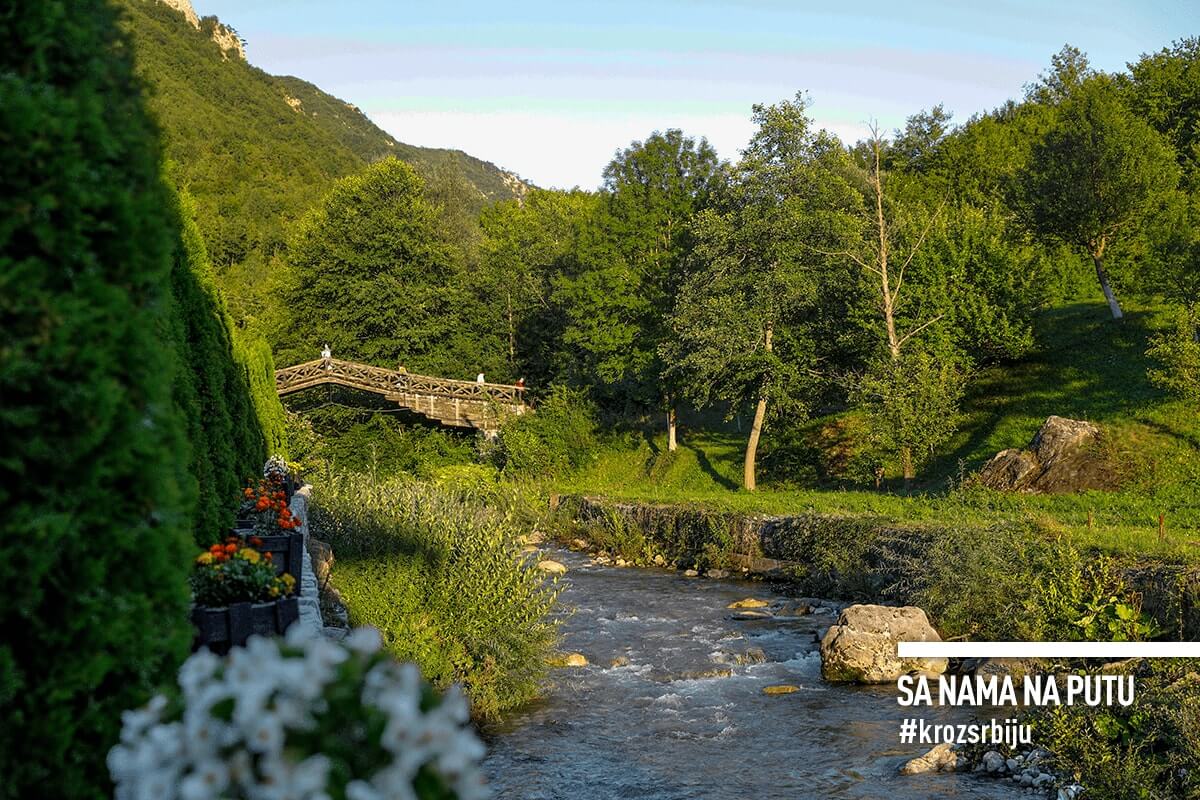
Harsh, but colourful canyon of the Mileševka river hides monks’ hermitages in vertical cliffs. The most famous is the one of Saint Sava, who arranged it, according to legends, at the model of Holly Mountain’s hermitages. There is, also the spring of Savina voda (Sava’s water) – healing water, especially for the visually impaired.
9. Because Zlatar lamb sticks to your fingers
One cannot truly enjoy Zlatar without having a meal there. Ethno house “Vila Jelena” seems a good choice. Traditional local food and homemade production To begin with – Zlatar snacks – famous dairy and meat gourmand snacks and buckwheat pie. For starter, one may order polenta or pancakes with greasy cheese – kajmak. Main course – lamb meat, certainly. Hot, non-fat, lean, with crispy crust. It may also be cooked, with kajmak. If you are not the fan of this type of meat, although this mountainous lamb has a fragrant flavour, there is also roast veal on kajmak. It seems that kajmak is combined with everything in the Zlatar zone.
Once it is tasted, it becomes clear why!
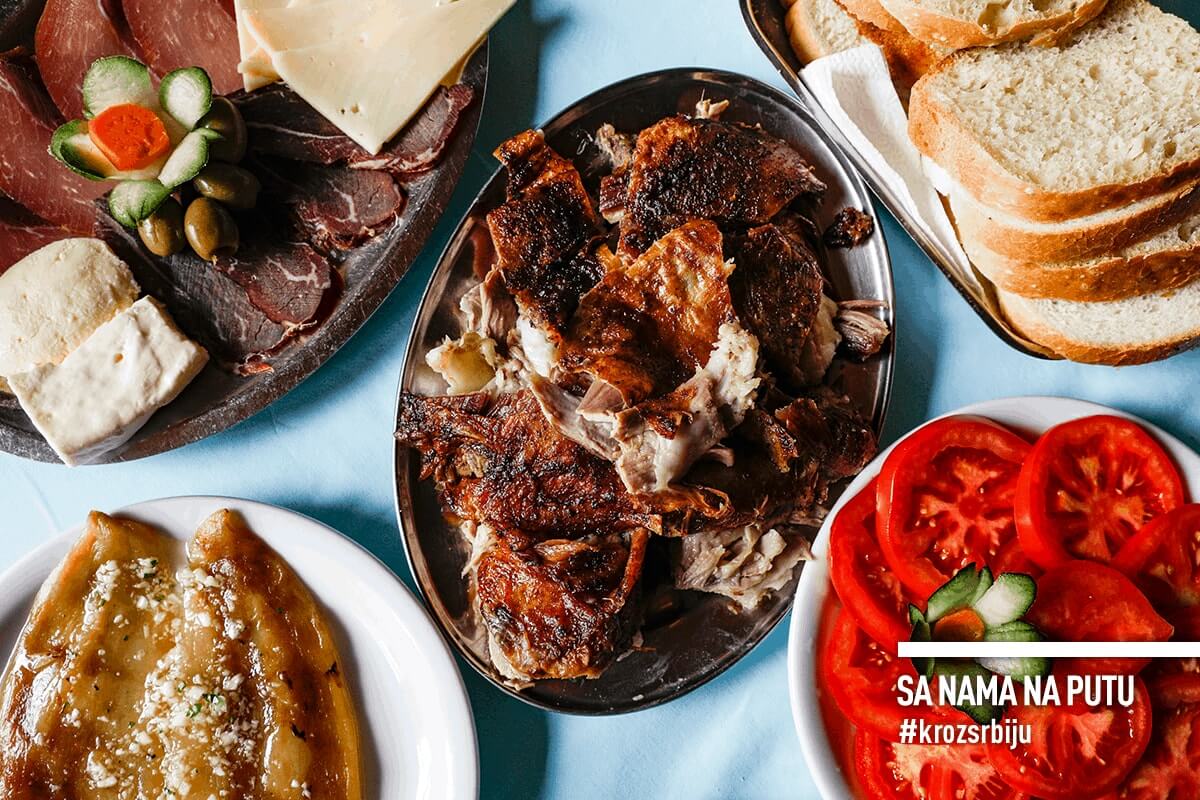
10. Because Zlatar lake is an emerald of misterious bottom
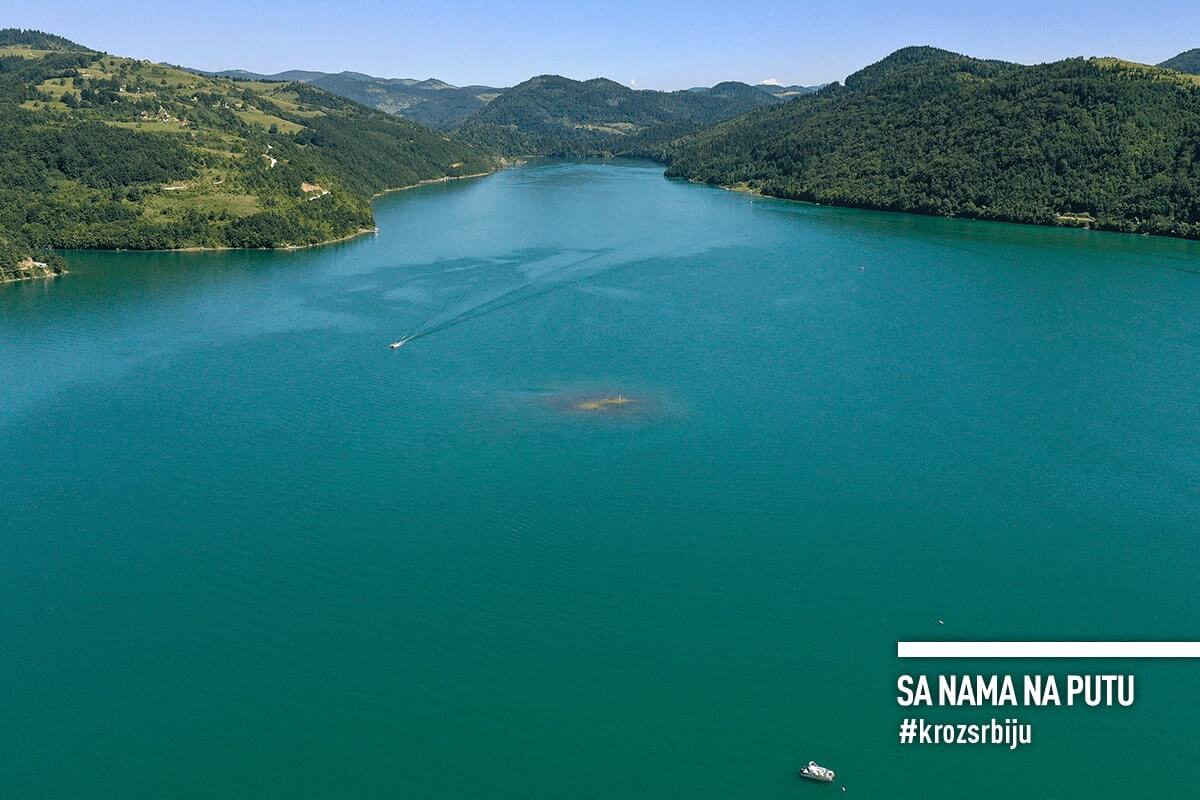
If lakes of Serbia are valued by the valuableness of precious metals, then Zlatar lake is the most valuable one. It is absolutely justified. It is, in fact, of greenish, emerald colour, but under the sky reflection, it shines in blue. In this year without seaside, it could trick us easily. Its water, crystal clear, is of tolerable temperature. It is rather appreciative for about 900 metres of altitude and not neglectable depth of up to 75 metres. The multitude of bathers and the young ones who enjoy in inflatable swimming floats. All sorts of little vessels, boats and kayaks and a few fishermen. In addition to the orderly bath area and the pontoon near a crowded restaurant, there are small beaches all around, surrounded by conifers. You may play a set of beach volleyball and sail above the Atlantis of western Serbia. Namely, when in sixties of the last century a dam was built to sluice the unrestrained, mountainous Uvac River, the entire settlement of Kokin Brod was flooded.
Alas, such beauty often knows how to disguise its secrets.
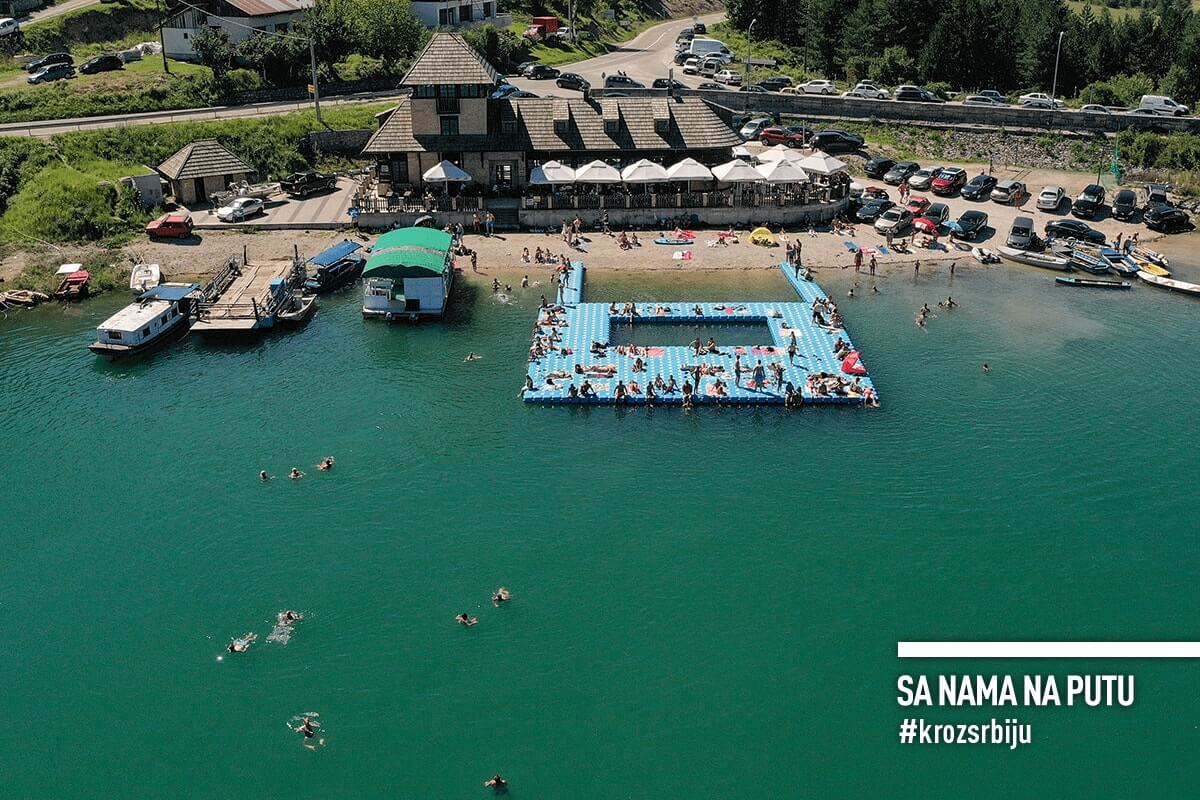
11. Because return trip may be enjoyable too
The road leads us straight, but we made right turn over the Kokin Brod dam. Our exploring spirit draws us to a less known road towards the city of Ivanjica. Solid road, not crowded. Slowly, while enjoying the nature – it is lavish and enchanting. Left to itself. In fact, that is for the best.
